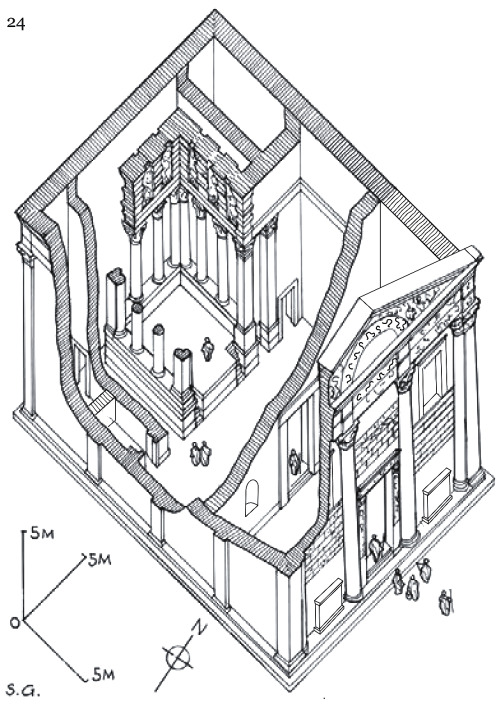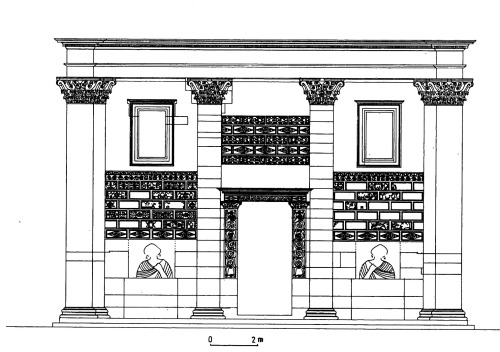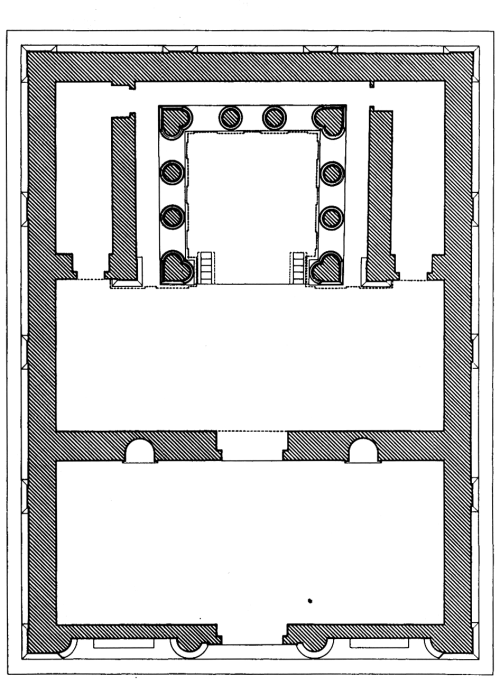#al uzza
Khirbet edh-Dharih
Jordan
100 CE
22x16 m
Dharih’s Nabataean settlement can be roughly dated to around 100 CE. It flourished during a period of prosperity in times of the Roman annexation of the Nabataean Kingdom.
The temple (22 m x 16 m) consists of an unroofed vestibule to the south which opens to an almost square complex to the north, with a cultic platform in its center. The façade facing south was 15 meters high. It had two protruding pedestals that used to host statues on each side of the entrance door, and two large windows above them. The architrave was decorated with carved vines and animals, and had Medusa heads at the corners. The frieze above displayed figures of the Zodiac alternating with winged Victories, and the triangular pediment, sea centaurs crowned by flying Victories. Standing eagles guarded the central figures. While several of the mentioned figures can be seen at the Jordan Museum, the central couple of gods, Dushara and al-‘Uzza, can only be guessed from fragments.
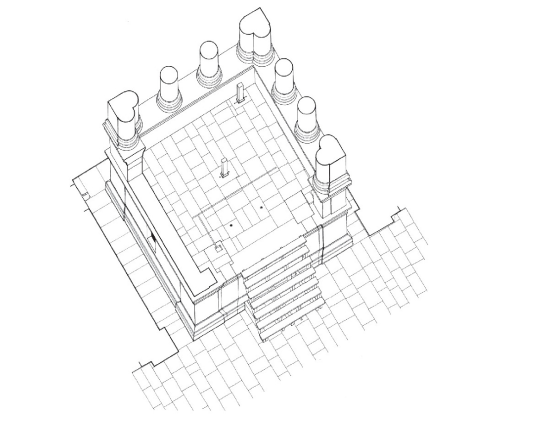

The columned podium (7 x 7 m, height 1.40 m) in the center is accessed through two narrow stairways in the front. In the central slab of its pavement is a rectangular hole flanked by two small circular ones. Beneath the slab, a stone basin was found. The excavators interpret this as a system for sticking a betyl, and collecting the offering liquid after the ritual libations. It is not clear if this would have been wine, oil, or even blood. In a later phase, further two betyl holes were added in diagonal, which indicates a cult of a triad of gods.


A narrow U-shaped corridor surrounds the podium on three sides to circumambulate it in ritual processions. The hallway also gives access to two crypts situated under the platform and to the corner rooms. The northeast one encloses a staircase that used to lead to a terraced roof, and the two on the northwest side have large wall cupboards.
It is assumed that the craftsmen of the Dharih temple were the same who decorated the temple on the peak of Jabal et-Tannur.
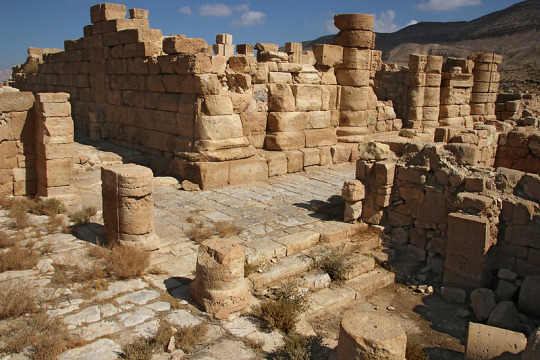

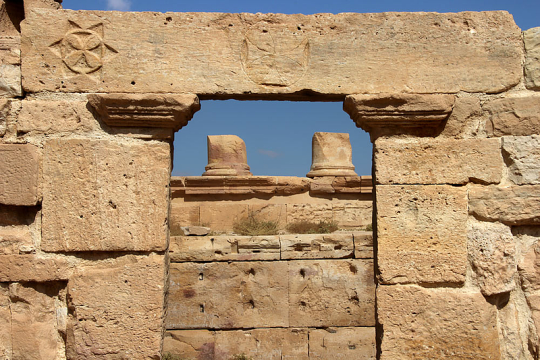



Post link

